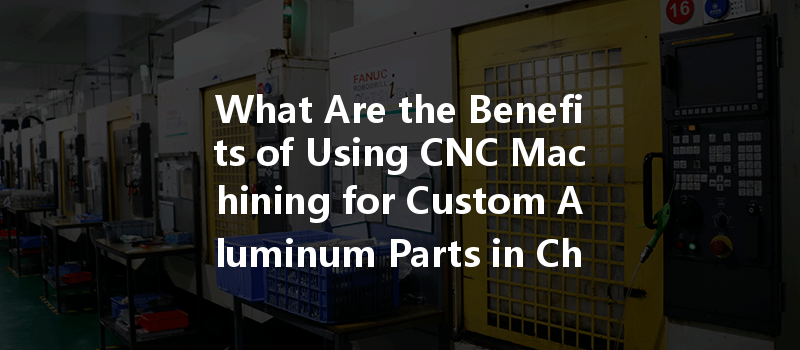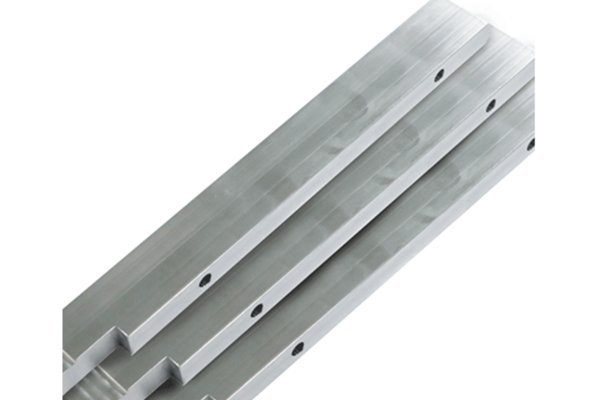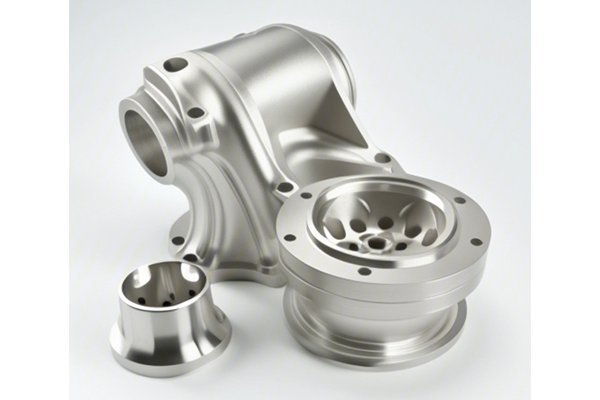Did you know that the global CNC machining market is projected to reach a staggering $100 billion by 2027? As industries continue to advance and evolve, the demand for precision engineering exceeds all expectations, particularly in rapidly growing sectors such as aerospace, automotive, and electronics. Among the various materials utilized in CNC machining, aluminum stands out for its versatility, lightweight nature, and strength. In this blog post, we will explore the numerous benefits of using CNC machining for custom aluminum parts in China, where competitive pricing, skilled labor, and advanced technology intersect to provide unmatched value.
: The Rise of CNC Machining
CNC (Computer Numerical Control) machining involves the use of computer software to control machine tools, allowing for automated manufacturing processes. Unlike traditional machining methods, CNC machining offers greater accuracy, repeatability, and efficiency. Given these advantages, it’s no wonder that manufacturers around the globe are turning to CNC machining, particularly in China—a country renowned for its robust industrial capabilities and cost-effective production solutions.
In this blog, we will explore the following topics:
—
Aluminum is often the material of choice for manufacturing custom parts due to its favorable properties, such as:
1.1 Lightweight yet Strong
Aluminum boasts a high strength-to-weight ratio, making it an ideal option for applications where weight savings are paramount. This is particularly relevant in the aerospace and automotive industries, where reduced weight can lead to improved fuel efficiency.
1.2 Corrosion Resistance
Aluminum naturally forms a protective oxide layer when exposed to oxygen, making it resistant to rust and corrosion. This property is crucial for parts subjected to harsh environments and chemicals, enhancing longevity and reducing maintenance costs.
1.3 Excellent Machinability
CNC machining aluminum is straightforward due to the metal’s softness and ductility, allowing manufacturers to produce intricate designs with excellent surface finishes quickly. This machinability also reduces tool wear, contributing to lower production costs.
1.4 Thermal Conductivity
Aluminum exhibits high thermal conductivity, making it an excellent choice for applications requiring efficient heat dissipation—think of heat sinks for electronic devices or parts in engines.
1.5 Recyclability
Another compelling reason for choosing aluminum is its recyclability. In an era where sustainability is becoming increasingly important, manufacturers can significantly reduce their environmental footprint by utilizing recycled aluminum in their production processes.
—
While many manufacturing processes exist, CNC machining encompasses various types, each suitable for different applications:
2.1 CNC Milling
CNC milling involves the use of rotary cutters to remove material from a solid block of aluminum, allowing for the production of complex shapes with high precision. This process is particularly beneficial for creating face features, slots, and intricate designs.
2.2 CNC Turning
In CNC turning, the workpiece rotates while stationary cutting tools remove material. This method excels in creating cylindrical parts, such as shafts and hubs, and is ideal for producing high-precision components.
2.3 CNC Laser Cutting
CNC laser cutting employs focused laser beams to cut through materials. This precise technique is excellent for detailed designs, especially in flat-sheet aluminum parts, ensuring minimal heat-affected zones and cleaner edges.
2.4 CNC Waterjet Cutting
Waterjet cutting is a versatile method that uses high-pressure water jets to cut through materials. This technique is beneficial for creating intricate patterns and components without thermal distortions.
2.5 CNC 3D Printing
Although still primarily an additive manufacturing process, CNC technology is now integrating with 3D printing, allowing hybrid methods that combine subtractive and additive processes. This flexibility enables manufacturers to develop custom parts that might be cost-prohibitive through traditional means.
—
When it comes to custom aluminum parts, China offers several compelling advantages:
3.1 Low Labor Costs
With significantly lower labor costs compared to Western countries, Chinese manufacturers can offer attractive pricing while adhering to high-quality standards. This cost structure allows companies to allocate previously earmarked capital elsewhere.
3.2 Advanced Technology
China is home to numerous players in the CNC machining sector, equipped with state-of-the-art machinery and technology. From high-speed milling machines to advanced robotic arms, Chinese factories often utilize the latest innovations to produce aluminum parts with unparalleled precision.
3.3 Skilled Workforce
Despite lower labor costs, China boasts a skilled workforce trained in CNC machining. Many workers have received advanced technical schooling and on-the-job training, ensuring that they possess the necessary expertise to handle CNC equipment effectively.
3.4 Rapid Production Times
Chinese manufacturers are known for their ability to ramp up production quickly, thanks to efficient logistics and streamlined processes. This is especially important for businesses facing tight timelines or needing to meet quick market demands.
3.5 Global Supply Chain Integration
China’s robust manufacturing ecosystem is integrated into a global supply chain network. This means that sourcing components and raw materials is often easier and more cost-effective than in other regions.
—
The cost advantages associated with CNC machining in China can’t be overstated. Several factors contribute to this, including:

4.1 Economies of Scale
Chinese manufacturers often operate on a massive scale, leading to economies of scale that significantly reduce production costs per unit. This is particularly beneficial for businesses that require large quantities of aluminum parts.
4.2 Material Costs
China is one of the largest producers of aluminum, leading to lower raw material costs. This, combined with modern automation, helps lower the overall cost of production without sacrificing quality.
4.3 Shipping Efficiency
With China’s robust shipping infrastructure, transporting finished products worldwide is more manageable and efficient. Many manufacturers also have established relationships with shipping companies, enabling lower freight costs.
4.4 Short Lead Times
The combination of advanced technology and skilled labor ensures that custom aluminum parts can be produced quickly, minimizing the time-to-market for businesses.
—
While cost-effectiveness is crucial, quality should never be compromised. Many Chinese manufacturers adhere to international standards, such as ISO 9001, to ensure consistent quality. This includes:
5.1 Quality Control Procedures
During the production process, rigorous quality control checks are performed at various stages. This helps identify and rectify issues before they escalate.
5.2 Advanced Inspection Tools
Utilizing technologies such as coordinate measuring machines (CMM) and automated visual inspection systems, manufacturers can guarantee that every component meets specifications.
5.3 Material Certification
Reputable manufacturers will provide material certifications, ensuring that the aluminum used meets industry standards and is suitable for specific applications.
5.4 Customer Feedback Integration
Many companies value customer feedback, using it to continuously improve processes and product quality. Satisfied customers often contribute to a manufacturer’s reputation and provide proof of their capabilities.
—
Custom aluminum parts manufactured through CNC machining find applications across various industries, including:
6.1 Aerospace
Aluminum’s lightweight and corrosion resistance make it perfect for aerospace components, such as aircraft frames, engine mounts, and landing gear.
6.2 Automotive
In the automotive industry, lightweight aluminum parts contribute to better fuel efficiency and performance. Components like chassis parts, wheels, and heat exchangers often utilize aluminum.
6.3 Electronics
With its excellent thermal conductivity, aluminum is ideal for housing electronic components, heat sinks, and enclosures.
6.4 Medical Devices
Custom aluminum parts are increasingly utilized in the medical industry for products like surgical instruments, diagnostic equipment, and hospital furniture due to their durability and ease of cleaning.
6.5 Construction
In construction, aluminum is used for structural components, roofing systems, and facade panels, benefiting from its strength-to-weight ratio and design flexibility.
—
As globalization continues to shape manufacturing trends, CNC machining in China is set to evolve further. Here are a few potential trends to watch:
7.1 Increasing Automation
With the rise of Industry 4.0, there is an ongoing push toward increased automation in manufacturing. Robotics and AI can streamline processes, improve efficiency, and enhance quality control.
7.2 Sustainability Focus
As environmental concerns grow, there will be a greater emphasis on sustainable practices. Manufacturers may utilize more recycled materials and adopt eco-friendly processes in their operations.
7.3 Customization and Personalization
A growing demand for customized products is expected to lead to more adaptable manufacturing processes, allowing for a higher degree of personalization in CNC machined components.
7.4 Expansion of AI and IoT
The incorporation of AI and the Internet of Things (IoT) into CNC machining could lead to smarter manufacturing processes, allowing for better tracking, predictive maintenance, and enhanced decision-making capabilities.
7.5 Global Competition
As more countries enhance their manufacturing capabilities, China may face increased competition. This will push manufacturers to maintain high-quality standards while continuing to innovate and offer cost-effective solutions.
—
In summary, CNC machining for custom aluminum parts in China presents substantial benefits, including cost-effectiveness, precision, and efficiency. From the unique properties of aluminum to the advanced technologies employed by skilled labor, businesses stand to gain significantly by choosing CNC machining in China for their manufacturing needs.
Emphasizing quality assurance and adopting sustainable practices will enhance these benefits further. As the industry evolves, those who embrace innovation and prioritize excellence will stay ahead of the competition.
Whether you are a startup looking to prototype your latest product or a well-established company requiring consistent, high-quality components, considering CNC machining in China for custom aluminum parts is a decision worth making. The future of manufacturing is bright, and with it comes endless possibilities for businesses willing to adapt and grow in this fast-paced landscape.
Investing time to understand the advantages of CNC machining not only informs better purchasing decisions but also solidifies a competitive edge in an ever-evolving market. By harnessing the power of technology and skilled craftsmanship, you can transform your ideas into reality—efficiently and cost-effectively.
Thank you for taking the time to explore this topic with us. We hope this blog has equipped you with the insight needed to make informed decisions about CNC machining for your custom aluminum parts.






